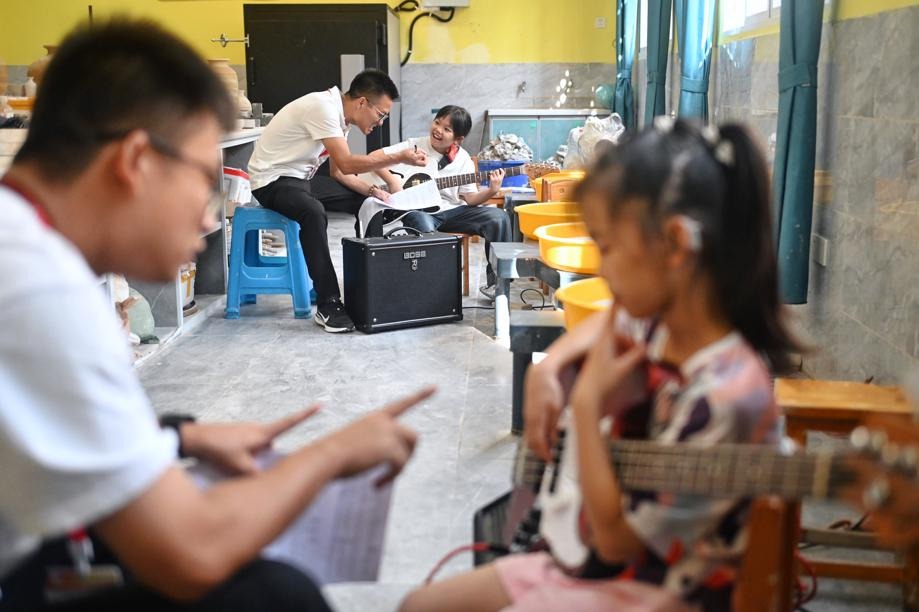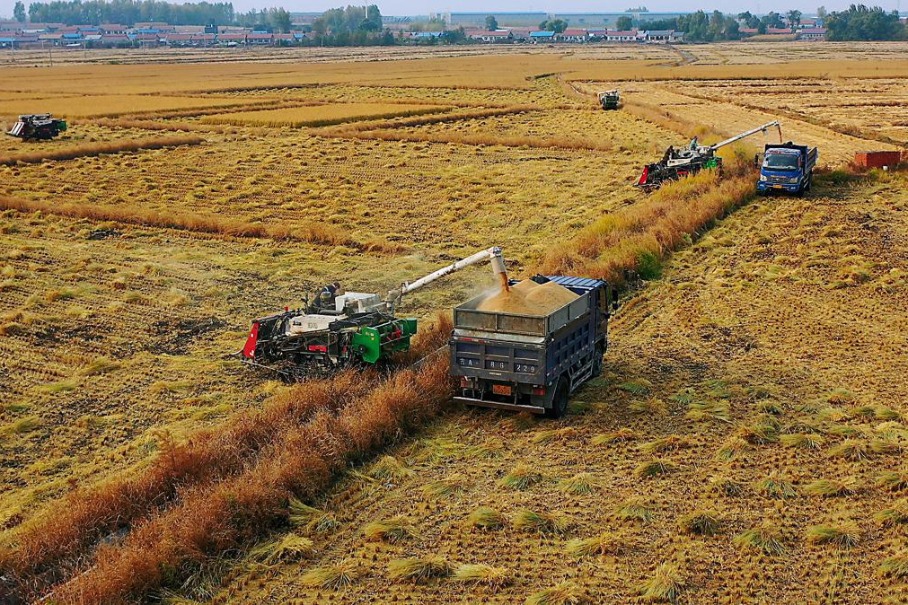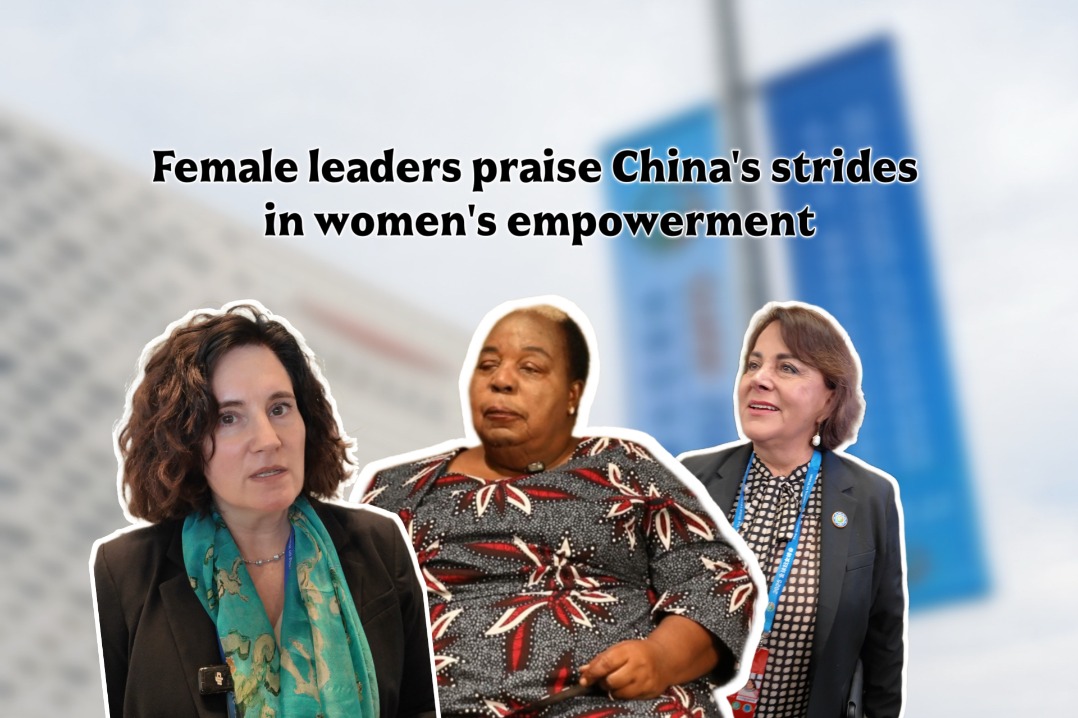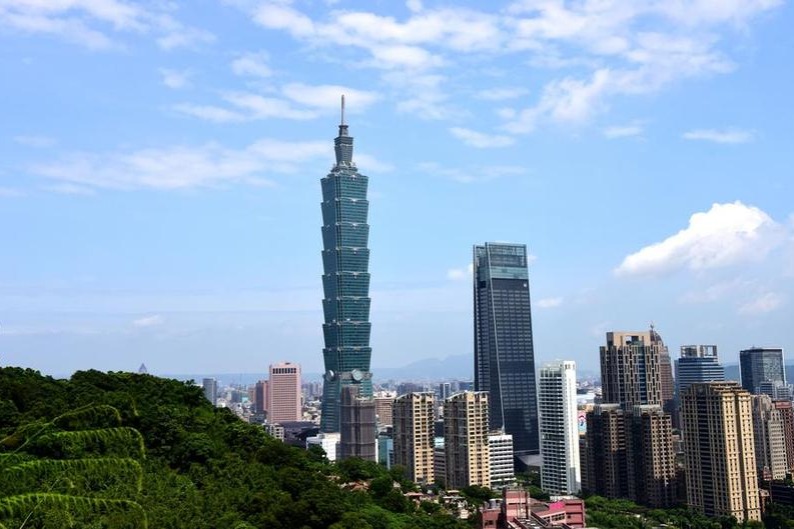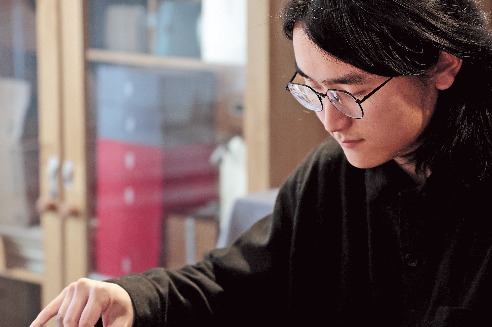Walking tall in a world of their own

Scratching out a living

For decades, Shenzhen has become a vital part of the global supply chain as foreign enterprises outsource their businesses for a cheaper, sustainable workforce and lower production costs. Migrant workers have managed to scratch out a living in the city and feed their families miles away in impoverished inland provinces.
At the turn of the century, the city's migrant worker population peaked at the downtown. As deep-pocketed manufacturers like Foxconn Technology Group relocated its largest factory precinct at Longhua Science and Technology Park and set up its recruiting station at Sanhe, a new congregation point for migrant workers took shape in Longhua in 2010, making it a magnet and transfer station for unskilled laborers across Shenzhen and all over the country.
Located in Bao'an district — one of the twin districts formerly lying outside the Shenzhen Special Economic Zone — Longhua, dubbed the city's back garden, is one of only a few regions in such a megacity where one may find the cheapest workforce and lowest living costs.
Xu Bin now works at an electronics factory in Shangtang, just two metro stops away from Sanhe.
The young man in his 30s works 12 hours-plus daily, seven days a week, earning up to 5,000 yuan ($758) a month — a salary he dared not dream of as he idled away at Sanhe.
Sanhe was Xu's first stop when he set foot in Shenzhen from his native Henan province seven years ago. Snaking through the dense, tangled warrens of the urban villages nearby, he was shocked by the incredibly low living costs in the area dominated by small and medium-sized businesses.
Urban villages, or "villages within the city", have long served as an enclave of cheap housing for migrant workers and immigrants who have helped support Shenzhen's economic crusade.
"Thanks to the lively urban villages, I've had no difficulty finding internet bars that charge 1.5 yuan per hour and 6 yuan for the whole night." recalls Xu. "Shabby hotels offer a bed for just 15 yuan and a single room for 30 yuan a night."
"At the famous Shuangfeng Noodle Restaurant, a bowl of noodles sets you back by just 4 yuan, and it has never raised its price. This is a wonderland for lowly-paid workers. It's equally a playground for job-shy people who just muddle along and idle away."
Xu's parents are among China's first generation of rural workers, who left their farms decades ago to work on assembly lines or construction sites in coastal cities and are about to retire.
When Xu took over from his parents to join the second generation of migrant workers, he refused to replicate their old, dull stories. "Working in factories means you are more or less chained to production lines. You punch in, punch out, and repeat the same cycle the next day. I just cannot help asking: What's the point of living a life like that."
He ended up signing up at Longhua's "Sanhe dashen club" as a worker on call. Next came seeing him throwing away five years at Sanhe, paralyzed by guilt and lost.
"When I realized I could not go to the dogs anymore, it was already in the winter of 2015. I fled Sanhe and found a full-time job in Shangtang, putting an end to this unbearable memory," says Xu.
"In Shenzhen's congested and hyperactive urban environment, it can be mind-boggling to see the likes of Sanhe dashen living in such a hyper-passive way," quips Fang.
"The strange and scrappy underground world of Sanhe bears little resemblance to Shenzhen that we have long been familiar with. There's no shortage of residents who have lived in Longhua for years but have never heard of Sanhe. What's happening in Sanhe sounds like a tale of two cities," he says.
"A key chapter of the story is about the festering wealth inequality," he notes. "Just a street away from Sanhe labor marketplace, you can find my residence called Longteng Garden. It stands by a small patch of tile-roofed houses — an urban slum recognizable to almost every Longhua dweller at first sight. "Two blocks away, there's a high-end residence called Jinxiu Yuyuan, located next to a swathe of 'handshake' buildings — the iconic concrete block buildings in urban villages that are located so close to one another that neighbors can easily greet each other from within," Fang adds.
Yang Wancheng, who runs the Shuangfeng Noodle Restaurant, calls Sanhe a "dye vat". "There's no dearth of young and decent people coming here with dreams of landing plum jobs. But, the weak-minded would fall prey to laziness and end up as the so-called dashens."
He urged those who're still relying on his eatery for a cheap three meals a day to seriously look for a new job. But, he himself won't have much time to see them make the change. A long-awaited redevelopment plan for the area is in place.
Shenzhen-based developer Vanke plans to use the area as a testing ground for long-term rental apartments with rents ranging between 2,000 and 4,000 yuan a month — well beyond the reach of most migrant workers.
As the area succumbs to modernity, it won't take long for internet bars, mom-and-pop hotels and corner shops that have made Sanhe a paradise for dirt-poor idlers to call it a day, predicts Yang.
- Yangtze River Delta at forefront of innovation drive
- Congratulations sent to Seychelles' president-elect
- Book to help readers better understand Xi's thought
- Fujian plays key role in boosting cross-Strait ties
- China studies in the era of digital intelligence
- New platform aimed at China-Africa economic and trade cooperation launched
















